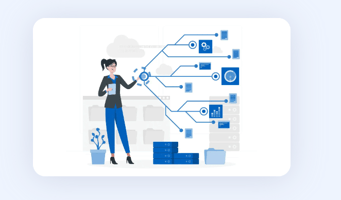Introduction In today's fast-paced digital landscape, businesses are constantly seeking innovative...
Choosing the Right Technology Stack for Your DIY CRM
Building your own CRM (Customer Relationship Management) system from scratch offers the flexibility and customization that can set your business apart. One of the critical decisions you'll face in this journey is selecting the right technology stack. Your technology choices will shape the foundation of your DIY CRM and determine its scalability, performance, and maintenance. In this article, we'll guide you through the process of choosing the optimal technology stack for building your own CRM.
Why Your Technology Stack Matters
The technology stack, often referred to as the tech stack, is the combination of programming languages, frameworks, libraries, databases, and tools that you use to develop your CRM system. Your choice of technology stack influences several crucial aspects of your CRM project:
-
Functionality: The stack you choose should align with the features and functionalities you want to incorporate into your CRM. Some technologies are better suited for specific tasks, such as database management or user interface design.
-
Scalability: A well-suited tech stack enables your CRM to grow with your business. The ability to handle increased data and user loads is vital for long-term success.
-
Performance: The efficiency and speed of your CRM depend on the technologies you select. Poorly chosen technologies can lead to sluggish performance and user dissatisfaction.
-
Security: Protecting customer data is paramount. Your tech stack should support robust security measures and compliance with data protection regulations.
-
Development Team Expertise: Consider your team's familiarity and expertise with the chosen technologies. This will affect the development speed and the quality of the final product.
-
Maintenance and Updates: Different technologies have varying levels of support and maintenance requirements. Choose a stack that aligns with your capacity to maintain and update the CRM.
Key Components of a CRM Technology Stack
Now, let's break down the essential components of a CRM technology stack and discuss the considerations for each:
-
Programming Languages:
- Java: Known for its reliability and scalability.
- Python: Offers rapid development and a rich ecosystem of libraries.
- Ruby: Ideal for startups and small teams due to its simplicity.
-
Databases:
- Relational Databases (e.g., MySQL, PostgreSQL): Suitable for structured data and complex queries.
- NoSQL Databases (e.g., MongoDB, Cassandra): Great for handling large volumes of unstructured data.
-
Server-Side Frameworks:
- Ruby on Rails: Known for rapid development and a strong developer community.
- Django (Python): Offers robust security features and scalability.
- Node.js: Ideal for real-time applications and asynchronous processing.
-
Front-End Technologies:
- HTML/CSS: The foundation of web development.
- JavaScript Frameworks (e.g., React, Angular, Vue.js): Enhance user interface interactivity and responsiveness.
-
APIs and Integration:
- Ensure your stack supports easy integration with third-party tools and services, such as email marketing platforms and analytics tools.
-
Hosting and Deployment:
- Choose a hosting platform and deployment strategy that suits your budget and technical requirements.
-
Security Measures:
- Implement authentication and authorization mechanisms.
- Regularly update dependencies to address security vulnerabilities.
-
Data Backup and Recovery:
- Set up automated data backup and recovery processes to safeguard customer data.
-
Scalability Considerations:
- Choose technologies that allow for horizontal scaling as your user base and data volume grow.
Conclusion
Choosing the right technology stack for your DIY CRM is a critical decision that will impact the success and longevity of your project. Consider your project's specific requirements, your team's expertise, and your long-term goals when making these technology choices. Building your own CRM requires careful planning, and a well-chosen tech stack is a fundamental building block in this exciting journey of building your own CRM.


